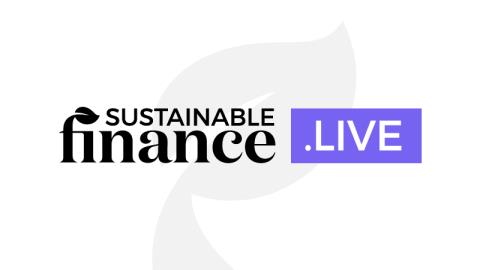In the final panel discussion of the day, led by Richard Peers, founder of ResponsibleRisk, the focus was on the integral role of data in enhancing nature intelligence within the financial services sector.
The panel featured prominent figures: Cathrine Armour, Director of Data Initiatives at the Taskforce on Nature-related Financial Disclosures (TNFD); Richard Conway, CEO of Elastaloud; Eoin Murray, Managing Director of Seed; Ana Raposo, Business Applications and Partnerships Officer at the European Space Agency (ESA); and Matt Sandoe, Chief of Staff at OS Climate.
The central theme revolved around the integration of diverse data sources and applications to foster rapid innovation while ensuring comparability and interoperability. Key questions included how organizations can effectively map, measure, and manage their reliance on natural assets throughout their supply chains, as well as how to establish the provenance of high-quality data to enhance accessibility and inform decision-making.
Peers initiated the discussion with Armour, seeking her perspective on the importance of data standardization and benchmarking. Armour underscored the growing demand for nature data, representing TNFD’s mission to provide organizations with guidelines for assessing, reporting, and acting on nature-related dependencies and impacts. "It’s essential to maximize the potential of reusable data. At TNFD, we advocate for collecting data once and using it multiple times," Armour noted. She also hinted at TNFD’s forthcoming blueprint for a significant data facility aimed at addressing gaps in the nature data landscape.
Driving Positive Change Through Open-Source Technology
Shifting the conversation towards the needed changes in the sector, Peers turned to Eoin Murray. He articulated the critical importance of legacy transformation and cited several trailblazers in this shift, including OS Climate, Ocean Ledger, and Cambridge University’s 4Cs group. "These organizations have struck an essential balance between scientific rigor and practical usability, which is vital for financial institutions," Murray stated, addressing the challenge of translating nature intelligence into actionable insights.
Murray highlighted the role of open-source technology, prompting Peers to ask Matt Sandoe about OS Climate’s initiatives. Sandoe elaborated on OS Climate’s non-profit status under the Linux Foundation, which grants access to a leading open-source consortium that includes major financial entities. "Open-source is incredibly valuable because it fosters collaboration across research, industry, and data providers, allowing us to identify common challenges and work together pre-competitively," he explained.
Enhancing Transparency with Space Data
The discussion soon moved to the theme of transparency, a recurring concern among panelists. Peers turned to Ana Raposo to share insights on how space data can enhance transparency. Raposo discussed the diverse applications of space data, from monitoring urban infrastructure to assessing agricultural health. "The clarity provided by space data allows us to track assets on local, regional, and global scales. It replaces reliance on traditional reporting methods with direct visual insights," she stated. She also mentioned the advanced capabilities of multispectral and hyperspectral data, which can differentiate numerous spectral signatures to inform quicker agricultural decisions.
Incorporating AI into Decision-Making
Finally, Richard Conway discussed the transformative impact of artificial intelligence, particularly how large language models (LLMs) can streamline data analysis and decision-making processes amid a deluge of information. "Transforming raw data into a shareable format for analytics is a significant challenge," Conway noted. However, he expressed optimism about the potential of open-source technologies to facilitate this transformation. "Recent advancements allow for the aggregation of complex data classifications using software and machine learning techniques to extract valuable insights," he observed, referencing applications in both sustainability and healthcare sectors.
In closing, the panelists emphasized the necessity for proactive and holistic approaches to data management, with technology available to organizations that can identify the right use cases for maximizing insights. A poll conducted during the session revealed an untapped opportunity in geospatial data usage: 42% of attendees indicated they were not currently utilizing geospatial data to inform risk assessments and decision-making, while 29% were either experimenting with or actively using geospatial data at scale.
